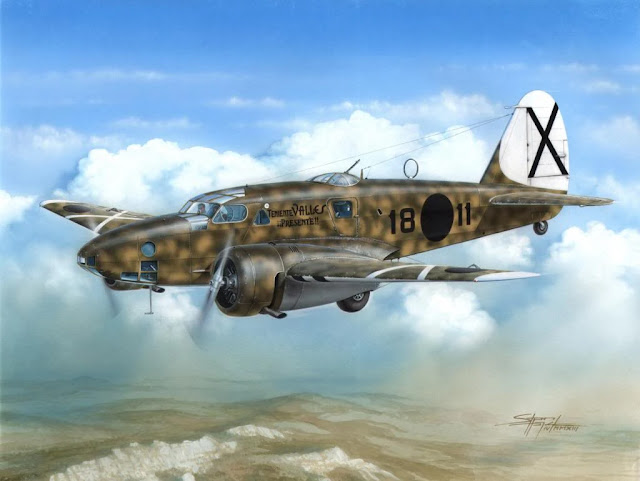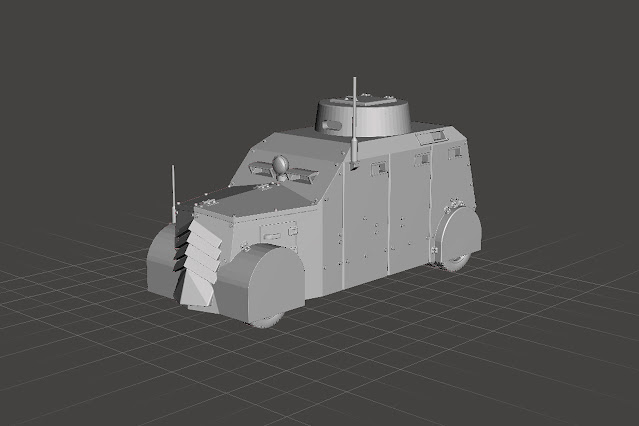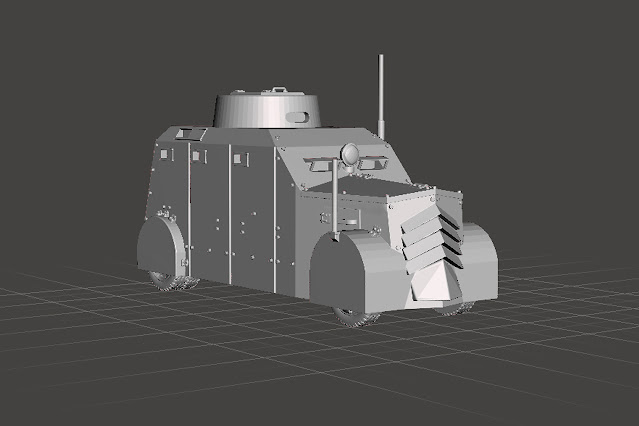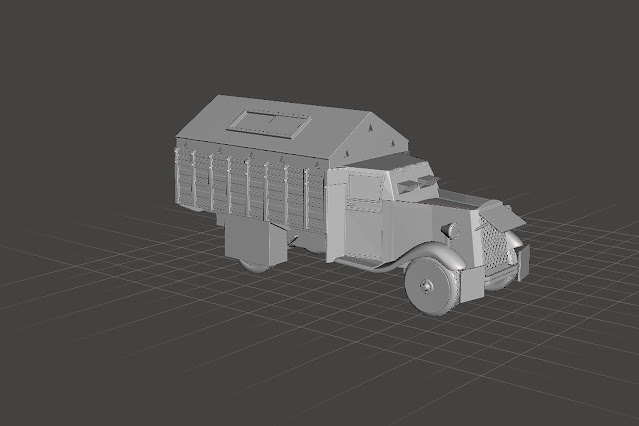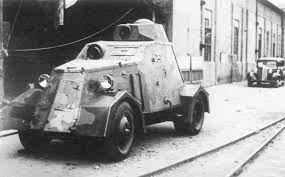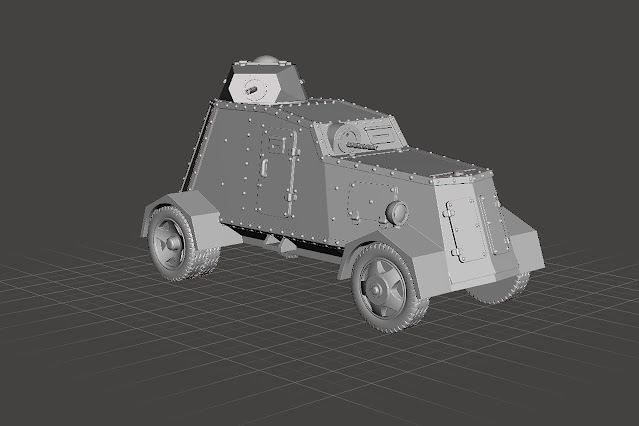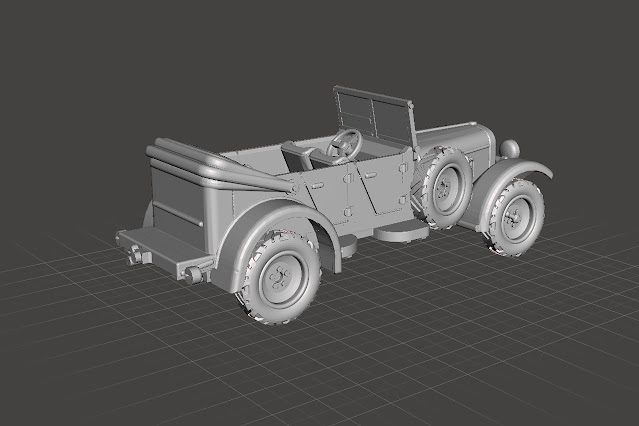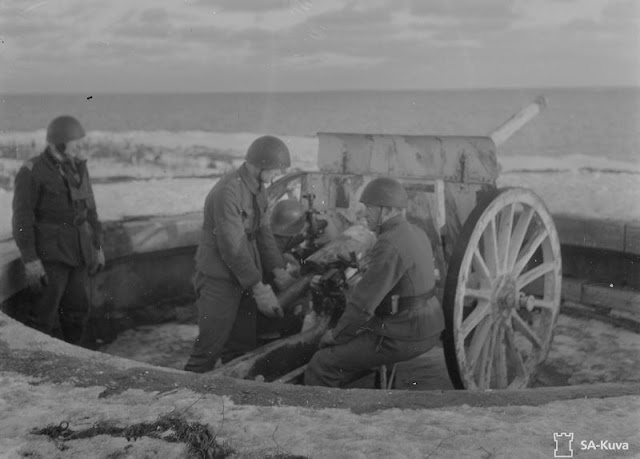Frankly, we could no longer sit by and allow a mere 57 aircraft types to carry the burden of the entire conflict. These noble winged warriors have done their duty, but like any good air force brass, we believe in throwing quantity at the problem until quality emerges by sheer statistical miracle. So whether you're a Nationalist ace, a Republican rookie, or just here for the engine noises, rest assured—reinforcements have arrived, and they’re loud, leaky, and extremely flammable.
So buckle up, adjust your leather flight helmet, and prepare for a dive into the gloriously chaotic skies of 1930s Spain. We’ve got new aircraft. We’ve got questionable design decisions. We’ve got paint jobs that scream “I was designed by committee.” And we’re putting them all into the firing line, because if there’s one thing this war needed, it was more mid-air collisions. Let’s take a look!
The Savoia-Marchetti Sm.81 'Pipistrello'
The Savoia-Marchetti SM.81 Pipistrello (that’s “Bat” to those whose Italian is limited to menu items) was Italy’s idea of a multi-role workhorse in the early 1930s—a time when aviation design still bore the charming hallmarks of trial, error, and occasional hope. Derived from the earlier SM.73 airliner, the Pipistrello was a three-engined, low-wing monoplane with a fixed undercarriage and the sort of profile that suggested it was designed by committee, each of whom had a slightly different aircraft in mind. It boasted a rather broad fuselage, capable of carrying up to 4,000 kg of bombs, a reasonable defensive armament of up to five 7.7 mm Breda-SAFAT machine guns, and a top speed that could best be described as brisk, provided you were being chased by nothing faster than a determined pigeon.
Now, onto its role in the Spanish Civil War, where the SM.81 followed up its successful combat debut during the Second Italo-Ethiopean War. Mussolini, ever keen to export both ideology and surplus hardware, dispatched the Pipistrello to support the Nationalists under the banner of the Aviazione Legionaria. While not exactly cutting-edge, the SM.81 was immediately put to work bombing Republican positions, railway lines, supply depots, and—in true interwar fashion—occasionally the wrong side, depending on the visibility and navigational accuracy of the day. It proved rugged, reliable, and, crucially, available in numbers. Its broad wings and stable flight characteristics made it quite suitable for the low-altitude bombing runs typical of the conflict, especially in the early years before dedicated fighters and anti-aircraft defences became particularly terrifying.
Despite its civilian heritage and slow pace (cruising at around 211 km/h, or the speed of a startled Vespa), the Pipistrello demonstrated surprising resilience under fire. Its three-engine configuration—typically Alfa Romeo 125 RC.35s or later Piaggio P.X engines—gave it a useful redundancy; pilots often joked that it would still limp home on one and a half engines and a prayer. While vulnerable to interception, especially as the Republican Air Force received more modern Soviet types, the SM.81 maintained a steady operational tempo. It was particularly effective in the early bombing of Madrid and the campaigns in the north, where its relatively generous bomb load and good range (up to 2,000 km) allowed it to support ground operations with consistent, if not always accurate, enthusiasm.
However, by the latter stages of the war, it became painfully clear that the Pipistrello’s glory days were behind it. Republican fighter defences had stiffened, and more nimble bombers like the SM.79 were entering the fray. The SM.81, noble bat that it was, began to look increasingly like a flying anachronism—a sort of airborne museum exhibit that was somehow still being shot at. Nevertheless, it served its purpose: it gave the Nationalists a strategic bombing capability at a critical time and proved that even a slightly overweight tri-motor with a face only an engineer could love could find its place in the chaos of civil war. And if nothing else, it provided invaluable experience for its crews—and target practice for everyone else.
The Caproni Ca.310 Libeccio—named, with what we can only assume was admirable optimism, after the warm south-westerly wind of the Mediterranean—was intended as a light bomber and reconnaissance aircraft for the modern age. Developed from the Ca.309 Ghibli, it retained the general layout of its predecessor but was fitted with sleeker lines, retractable landing gear (a marvel, though not entirely reliable), and a glazed nose section for its observer, who could now enjoy being motion-sick and shot at in equal measure. Powered by two Piaggio P.VII C.35 radial engines delivering 470 horsepower each, the Ca.310 could reach a top speed of around 370 km/h, though only if gravity was on its side and no one was looking too closely at the altimeter.
In the Spanish Civil War, the Ca.310 was sent as part of Mussolini’s ongoing contribution to the Nationalist cause—and perhaps, more cynically, as an opportunity to test his engineers’ work on someone else’s front line. Arriving in the latter half of the conflict, the Libeccio was assigned to reconnaissance and light bombing duties with the Aviazione Legionaria. While its modern appearance raised eyebrows and hopes alike, its operational record was somewhat more modest. Republican forces, by this point better equipped and less inclined to admire the aircraft’s Art Deco contours, were increasingly able to mount effective resistance, and the Ca.310’s light bomb load (400 kg maximum) limited its impact to tactical targets such as convoys, small troop concentrations, and anyone unfortunate enough to be in the open during siesta.
In fairness, the aircraft’s versatility made it a welcome addition to an air arm still relying heavily on older types. The Ca.310 could loiter, photograph, drop a few bombs, and return with at least one engine still running—most of the time. Its retractable undercarriage, a technical innovation, was prone to sulking at inopportune moments, and its defensive armament—a single dorsal 7.7 mm Breda-SAFAT machine gun and two fixed forward-firing guns—was only marginally more effective than harsh language. Still, in the calmer airspace of the rear areas and during low-intensity operations, the Libeccio held its own, performing reconnaissance missions with relative ease, so long as no one on the ground took much exception to being observed.
Ultimately, the Ca.310’s performance in Spain could best be described as “educational”—for the Italians, who discovered its limitations rather quickly, and for the Nationalists, who politely declined further large-scale deliveries. While it was a step forward from its predecessors, it wasn’t quite the leap hoped for. Later export customers, such as Norway and Hungary, would also find it wanting, with more than a few aircraft quietly returned or traded like an unwanted Christmas jumper. Still, the Libeccio left its mark—if not always in bomb craters, then certainly in the lessons it offered about mid-1930s aircraft design: namely, that beauty is not always accompanied by competence, and that even the most stylish of aircraft must occasionally deliver results.
The De-Havilland DH-89 Dragon Rapide & DH-89M Militarised Rapide
Ah, the de Havilland DH.89 Dragon Rapide—a name that conjures the image of roaring skies and heroic deeds, though in reality, it was far more likely to be found transporting civil servants, minor aristocrats, and baskets of mail than dodging flak. Introduced in 1934, the Dragon Rapide was a twin-engined, short-haul passenger aircraft that brought a touch of elegance and art deco flair to the interwar skies. Built primarily from wood and fabric (because what else would you want to be flying over the Pyrenees in?), the DH.89 was powered by a pair of de Havilland Gipsy Six engines, each offering 200 horsepower—just enough to get airborne with eight passengers and a strong tailwind. Its cruising speed of 253 km/h wasn’t exactly blistering, but it had range, reliability, and charm in spades.
When the Spanish Civil War erupted in 1936, the DH.89 found itself pressed into roles far beyond its original remit. Famously, one such aircraft was used in a pivotal moment of the war: the July 1936 flight from the Canary Islands to Spanish Morocco, in which General Francisco Franco was flown aboard a privately hired Rapide—G-ACYR, if we’re being precise. This humble airliner thus played a rather significant role in history, facilitating Franco’s rendezvous with the Army of Africa and, one might argue, kicking off the whole nationalist escapade in earnest. One could say the Dragon Rapide helped deliver fascism to mainland Spain with all the punctuality of a well-managed British train timetable.
As the war progressed, more Dragon Rapides were pressed into service by both sides, though with wildly differing levels of military enthusiasm. The Nationalists, having received some examples through shadowy procurement channels (including possibly "lost" civilian aircraft that somehow forgot their original destinations), began adapting them for communications, liaison duties, and occasional bombing missions—yes, bombing, though dropping explosives from a Dragon Rapide was rather like lobbing bricks from a double-decker bus. The aircraft’s wooden airframe was never designed for combat stress, and one suspects that any encounters with faster, better-armed aircraft ended with the Rapide rapidly ceasing to be so.
Enter the DH.89M, or Militarised Rapide, de Havilland’s very polite attempt to make a warplane out of a gentleman’s commuter aircraft. The M-variant featured reinforced structure, provisions for a dorsal Lewis gun, and underwing racks for light bombs—because if history has taught us anything, it’s that the British will try to put bombs on absolutely anything. Several of these were reportedly used in Spain in a limited capacity by the Nationalists. They performed reconnaissance, light transport, and short-range bombing runs, albeit with a rather high element of risk. After all, the DH.89M still shared the basic silhouette of a flying cricket pavilion—hardly ideal when bullets are involved.
Despite their clear unsuitability for front-line combat, the Dragon Rapides were prized for their availability and their surprising durability under the right conditions (i.e., when no one was shooting back). Both Republican and Nationalist forces used them extensively for VIP transport, courier work, and observation. It wasn’t glamorous service, but it was essential, and in many cases, the Rapide proved to be far more dependable than some of the purpose-built bombers flailing around the skies. They also had the immense advantage of being easy to fly and maintain, which in a war filled with logistical chaos was no small feat.
In the grand pantheon of military aircraft, the Dragon Rapide and DH.89M occupy a peculiar niche—somewhere between “ill-advised” and “remarkably useful, all things considered.” They weren’t fast, they weren’t heavily armed, and they certainly weren’t intimidating, but they soldiered on nonetheless, bridging gaps, ferrying commanders, and occasionally launching bombs with all the menace of an angry postman. Their contribution to the Spanish Civil War may not have been the stuff of legends, but it was, in its own quiet, propeller-humming way, rather heroic.
The Potez 25 TOE
The Potez 25 TOE—the Terre d’Outre-Mer variant of France’s wildly successful interwar biplane—was very much a product of its time: sturdy, versatile, and about as streamlined as a garden shed. First introduced in the mid-1920s, the Potez 25 was designed as a twin-seat reconnaissance and light bomber aircraft, and by the early 1930s, it had been exported far and wide to anyone with a runway and a budget. The TOE version was built specifically for colonial service, boasting a reinforced airframe, desert filters, and an extended range fuel tank—ideal for long sorties over vast and often hostile terrain. Powered by a 600 hp Hispano-Suiza 12Hb V-12 engine (though various engines were fitted depending on the customer), it could reach speeds of up to 230 km/h—not bad for a machine held together largely by fabric, wood, and French engineering optimism.
The Spanish Civil War saw the Potez 25 pressed into service with the Fuerzas Aéreas de la República Española (FARE), who received several examples from French stocks, including TOE variants. Despite being somewhat long in the tooth by 1936, the Potez was deployed in reconnaissance and light bombing roles, particularly during the early stages of the conflict when the Republican forces were desperately cobbling together an air force out of anything with wings. It was serviceable, if unspectacular—able to loiter over the front lines, snap photographs, and drop small bombs with the sort of casual detachment one might expect from a reluctant waiter at a tapas bar.
What the Potez 25 lacked in glamour, it made up for in sheer doggedness. The TOE’s ruggedness allowed it to operate from rough fields and endure the usual Spanish warzone hospitality: dust, heat, poor maintenance, and the occasional unexpected rendezvous with enemy fighters. That said, when faced with modern opposition—such as the Nationalists’ Italian CR.32s or German Heinkel biplanes—the Potez was at a distinct disadvantage. With only a single forward-firing machine gun and a rear-mounted Lewis or Darne gun for defence, its survival often came down to pilot skill, low visibility, or divine indifference. Nonetheless, its crews managed to eke out a useful, if modest, contribution to the Republican war effort, particularly in the less heavily contested zones.
By late 1937, however, the Potez 25 was clearly past its prime, a relic of an earlier era trying to keep pace in a conflict rapidly evolving around it. More advanced Soviet aircraft like the Polikarpov R-Z and SB-2 were entering Republican service, and the humble Potez was gradually relegated to second-line duties—training, liaison, and the sort of reconnaissance where enemy contact was considered impolite. Still, it earned its stripes in the crucible of civil war, not by excelling, but by enduring. The Potez 25 TOE, with its colonial lineage and stoic persistence, proved once again that war is not always won by the best or brightest—sometimes it’s the biplane that simply refuses to stop flying.
The Amiot 143
The Amiot 143 was one of those interwar aircraft that seemed to defy the very notion of aerodynamics, resembling less a bomber and more a flying greenhouse bolted to a steel trestle. Designed in the early 1930s as part of France’s push for modernisation, it was already outdated by the time it entered full service in 1935. A high-wing monoplane with fixed undercarriage and an enormous glazed nose, the Amiot 143 looked as though it had been built by someone halfway through designing a train. It was powered by two 860 hp Gnome-Rhône 14K radial engines, giving it a top speed of roughly 285 km/h—adequate for the mid-1920s, not so much by 1936. It could carry up to 1,200 kg of bombs and featured no fewer than five defensive machine guns placed in nose, dorsal, ventral, and lateral positions, in what one assumes was a sincere attempt to shoot in every direction except forward.
In the Spanish Civil War, the Amiot 143 was deployed in small numbers by the French to aid the Republican cause—though "aid" is perhaps a generous term, as it frequently turned out to be more of a charitable donation of flying targets. A handful of examples were loaned or covertly transferred in late 1936 and early 1937. While the aircraft’s range (up to 1,200 km) and payload made it potentially useful for strategic bombing, its slow speed, appalling silhouette, and habit of flying as if it were carrying a full wine cellar meant it struggled to operate effectively in contested airspace. Republican crews attempted night bombing runs to mitigate its shortcomings, although visibility remained a pressing issue—especially from the nose, where the observer had the unenviable job of aiming bombs through a maze of struts, framing, and whatever condensation had built up on the glasshouse that morning.
Against modern fighters—such as the Nationalist CR.32 or Heinkel He 51 (cough)—the Amiot 143 fared poorly. Its defensive armament gave it a fighting chance, but only in the same way that a hedgehog gives a fighting chance to a passing lorry. Its lack of manoeuvrability and glacial climb rate meant that interception was often fatal, and several aircraft were lost in relatively short order. Still, Republican forces, desperate for anything capable of lifting more than a basket of grenades, made the best of the situation. The Amiots were employed primarily in rear-area bombing and logistical roles, with pilots soon mastering the fine art of "bombing from altitude and leaving immediately." Their real strength was in range and payload—useful for attacking depots or infrastructure when the skies were clear of hostile attention.
In the end, the Amiot 143’s service in Spain served largely to underscore the need for something faster, sleeker, and less likely to be mistaken for a shed in distress. Though hardly glorious, its contribution wasn’t without value: it helped the Republicans maintain a semblance of strategic bombing capability during a period when they were otherwise heavily reliant on hastily converted civilian aircraft and a smattering of Soviet designs. The Amiot, bless its clumsy heart, tried its best. And if it failed to strike fear into the hearts of the enemy, it at least struck bemusement—followed shortly thereafter by anti-aircraft fire.
The Bloch MB.200
The Bloch MB.200 was one of those aircraft that looked like it had been designed in a hurry and approved even faster. Conceived in the early 1930s as part of France’s attempt to modernise its air fleet, the MB.200 was a twin-engined monoplane bomber with an all-metal frame—remarkable at the time—and an aesthetic somewhere between “airborne bathtub” and “flying greenhouse.” It was powered by two Gnome-Rhône 14K radial engines churning out around 870 horsepower apiece, which enabled a top speed of approximately 285 km/h—just enough to outrun certain types of agricultural machinery. Armed with up to four 7.5 mm MAC 1934 machine guns in nose, dorsal, and ventral positions, and capable of carrying 1,200 kg of bombs, it was intended to be a strategic asset. In practice, it was more of a strategic inconvenience.
When civil war broke out in Spain, the French Popular Front government—keen to appear helpful without appearing too helpful—sent a handful of MB.200s to bolster the struggling Republican Air Force in late 1936. For the beleaguered Spanish pilots, these aircraft must have seemed a mixed blessing: undeniably modern by comparison with some of the flying museum pieces already in service, yet still hopelessly outmatched by modern fighter aircraft. The MB.200s were immediately put to use in both daylight and night bombing roles, flying missions against Nationalist supply depots, railway lines, and the occasional suspiciously quiet village square. Despite their lumbering nature, they were relatively stable platforms and could take a surprising amount of punishment—though not enough to consider such punishment an artifact of wisdom.
The aircraft quickly acquired a reputation for survivability that bordered on stubbornness. Crews appreciated the sturdy construction and decent defensive fields of fire, even if the visibility from the various turrets was only marginally better than peering through a letterbox during a thunderstorm. In the early stages of the war, when opposition in the air was sporadic, the MB.200 was moderately effective. But as the Nationalists received better fighters from Germany and Italy, the aircraft’s limitations became increasingly apparent. Attempts to fly daylight bombing missions without escort were generally ill-advised, and several MB.200s were lost to the nimble CR.32s and He 51s, which viewed the Bloch not so much as a threat but more as a flying buffet.
By the end of 1937, the MB.200 had largely been shifted to secondary roles—training, liaison flights, and occasional nighttime bombing where the odds of being intercepted were mercifully slim. Though never a star performer, it filled a crucial gap in the early war months and helped lay the foundation for more effective aerial operations later on. Its brief but earnest service in Spain serves as a reminder that, in war, even the dumpy, slow, and underloved machines have their moment—however fleeting—between the clouds and the chaos.
...and finally for this releases additions; the Bloch MB.210
The Bloch MB.210 was, in many respects, the French aviation industry’s attempt to apologise for the MB.200—by building another aircraft that looked oddly similar, flew only slightly better, and made broadly the same complaints when taken into combat. Designed as a modernised evolution of its boxier predecessor, the MB.210 featured a cleaner fuselage, fully retractable undercarriage (luxurious, by French 1930s standards), and more powerful radial engines—typically a pair of Gnome-Rhône 14N-10 or 14N-11s producing around 1,000 horsepower each. It could reach a top speed of just over 330 km/h and carry up to 1,200 kg of bombs, with defensive armament comprising multiple 7.5 mm MAC machine guns mounted in nose, dorsal, and ventral positions. This all sounds rather respectable until you recall that by the time it actually arrived in meaningful numbers, faster monoplane fighters were treating it as target practice.
The MB.210 made its way into the Spanish Civil War via the usual polite semi-deniable route taken by French matériel of the period—namely, “we’re not officially sending it, but oh look, here it is.” Republican forces received a small batch in 1937, just in time to realise that it was already bordering on obsolete. Nonetheless, with few better options and a front line in constant need of explosive reminders, the MB.210 was quickly put to work in bombing roles. While marginally faster and more aerodynamic than the MB.200, it was still lumbering by modern standards, and required either darkness, altitude, or sheer luck to make it back in one piece when facing modern enemy fighters. That said, it was a stable bombing platform and relatively easy to maintain—two qualities that, in wartime Spain, bordered on divine miracles.
In the field, Republican MB.210s were employed for both tactical and strategic bombing—attacking supply depots, troop columns, and rail lines with an enthusiasm somewhat disproportionate to their success rate. Crews appreciated the improved cockpit layout and the retractable undercarriage (which occasionally even worked as intended), but the aircraft remained an easy mark for the increasingly aggressive Nationalist fighter patrols. Encounters with Bf 109s and CR.32s frequently ended with Republican gunners discovering just how little a 7.5 mm machine gun could do against a determined opponent with both speed and altitude on their side. Daylight missions became less and less viable, pushing the MB.210 into night operations, where its real virtue was that no one could see it to shoot it down.
By the end of the war, the MB.210 had become a footnote in Spain's increasingly modern aerial conflict. Though never a game-changer, it was, like so many interwar bombers, a flying compromise: good enough for the late 1920s, barely acceptable by the mid-1930s, and wholly outclassed by the end of the decade. Still, it served with a sort of Gallic perseverance—an aircraft that knew it wasn’t the fastest or fiercest, but turned up anyway, did its job, and hoped no one noticed the smoking engine on final approach. As bomber crews went, they couldn’t ask for much more—except perhaps for a few extra knots of speed and someone to deal with the undercarriage when it jammed. Again.
So, there we have it! As we descend from this aerial tour of 1930s winged eccentricity, one cannot help but marvel at the sheer range of machines hurled—sometimes literally—into the Spanish Civil War. From the gallant stubbornness of the Potez 25 TOE to the magnificent absurdity of the Amiot 143, each aircraft brought with it not only bombs and bullets, but also an air of interwar optimism, long-suffering engineering, and a gentle refusal to accept the forward march of aerodynamics. They were underpowered, overburdened, and often as well-armoured as a wet tea towel—but they flew, and in that lies a kind of nobility. Or at least a noble attempt.
It’s easy to scoff at the likes of the Bloch MB.200, the Caproni Ca.310, or the indestructibly mild-mannered DH.89M Rapide—but in the fevered skies over Spain, these machines were the difference between something and nothing. They bombed, they reconnoitred, they occasionally got lost and did a bit of both. They served in a war where the frontline shifted as swiftly as Spanish post-prandial bowel movements, and where the only guarantee for aircrews was that their aircraft would likely be outpaced by the enemy and occasionally by their own ground crews. And yet, whether slogging over the Ebro or dodging Nationalist fighters above Madrid, they gave what they could—sometimes their best, frequently their last.
In sum, the Spanish Civil War was a chaotic theatre where yesterday’s aircraft flew today’s missions against tomorrow’s opposition. While none of these aircraft—bless their riveted hearts—would go down in history as technological triumphs, they were flown with courage, desperation, and the faint hope that maybe, just maybe, the metaphorical pigeon could outfly the hawk. That they mostly didn’t is beside the point. They had character, they had purpose, and most importantly—they had wings.
...Just about.




